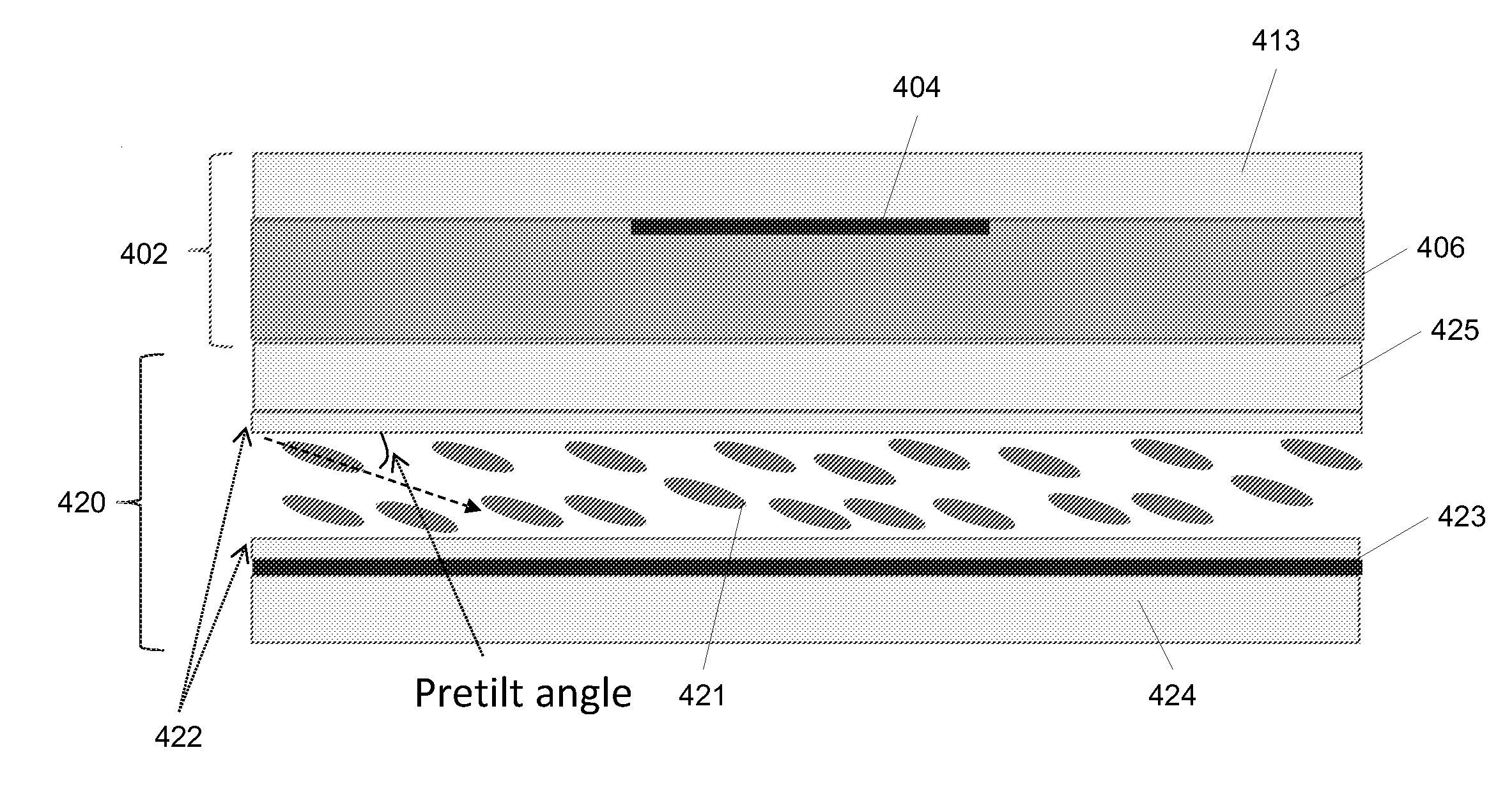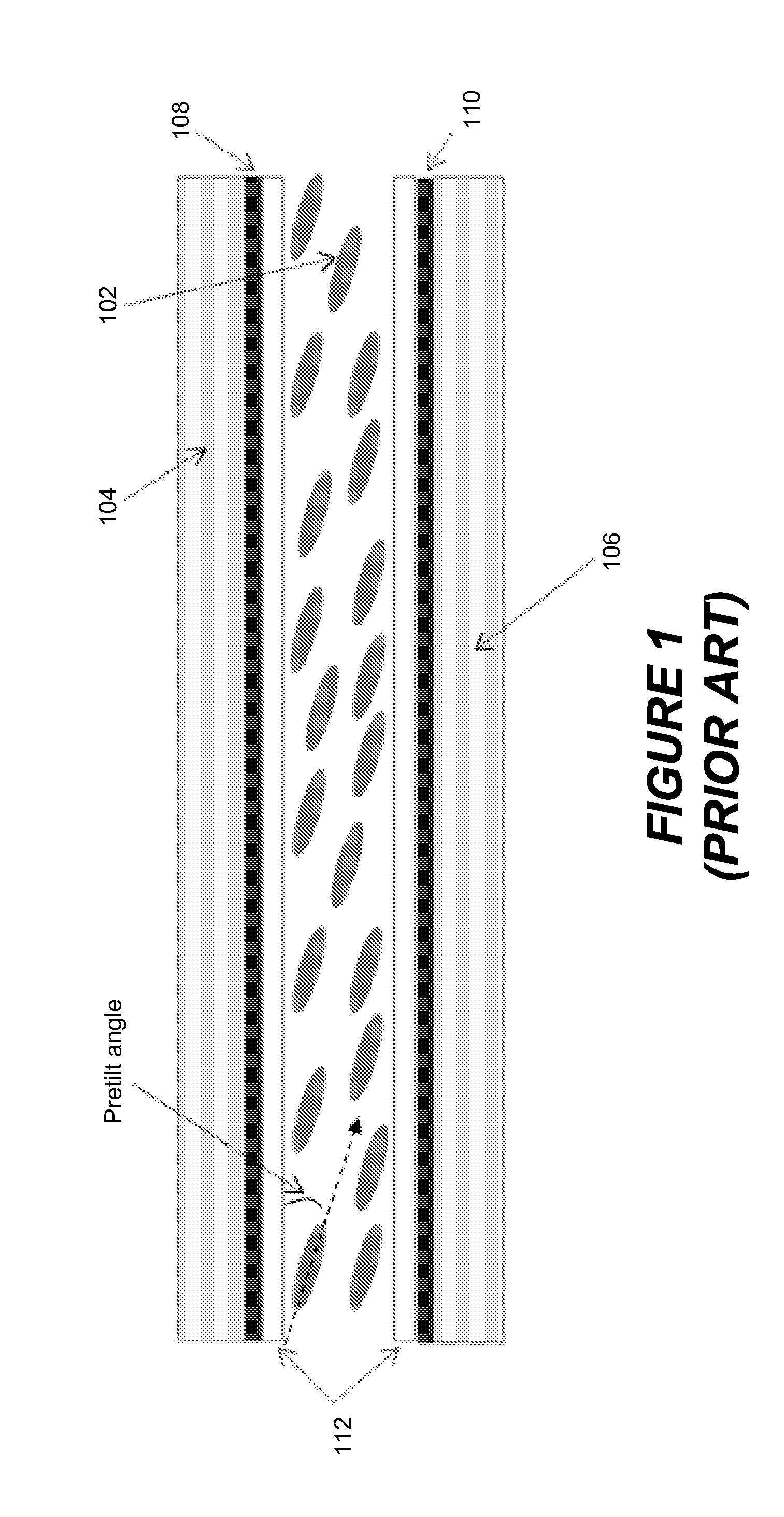Electro-optical devices using dynamic reconfiguration of effective electrode structures
- Summary
- Abstract
- Description
- Claims
- Application Information
AI Technical Summary
Benefits of technology
Problems solved by technology
Method used
Image
Examples
Embodiment Construction
[0077]The present invention is directed to a tunable liquid crystal (LC) lens using a frequency dependent material to modify a spatial profile of the electric field via frequency tuning. Thus, tuning of the lens can be frequency controlled. The devices of the present invention may be used for tunable focusing, diffracting, steering, etc. The devices of the present invention may also be used for controlling a LC optical device that is fixed. FIG. 4A schematically illustrates a tunable LC lens using a layer 406 of a material having a frequency dependent characteristic. This material may be, for example, a high dielectric constant material, or a material of weak conductivity, and is hereinafter referred to, for brevity, as the “frequency dependent material.” Functionally, the material has the characteristic of allowing a limited degree of charge mobility through it, and that degree of charge mobility is dependent on the frequency of the electrical signal applied to the device. Thus, fo...
PUM
 Login to View More
Login to View More Abstract
Description
Claims
Application Information
 Login to View More
Login to View More - R&D
- Intellectual Property
- Life Sciences
- Materials
- Tech Scout
- Unparalleled Data Quality
- Higher Quality Content
- 60% Fewer Hallucinations
Browse by: Latest US Patents, China's latest patents, Technical Efficacy Thesaurus, Application Domain, Technology Topic, Popular Technical Reports.
© 2025 PatSnap. All rights reserved.Legal|Privacy policy|Modern Slavery Act Transparency Statement|Sitemap|About US| Contact US: help@patsnap.com



